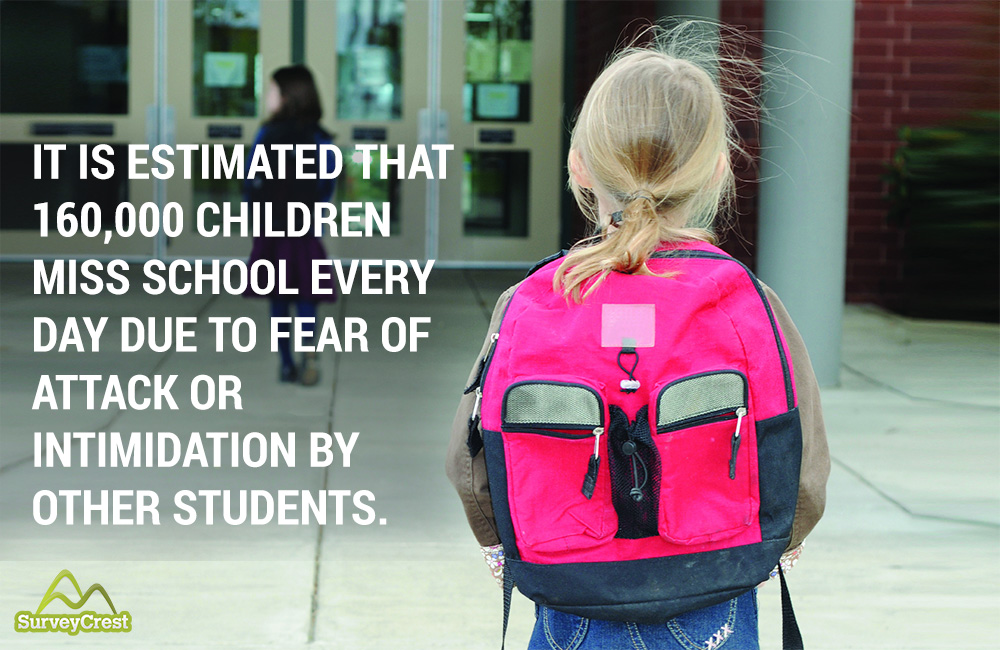
Photo Credit: iStock.com/Artist's Rivendellstudios
Online gaming was supposed to be about knowing your friends and opponents and besting them through sheer tenacity and skills. Online social networks were supposed to be about uniting people all over the world and promoting tolerance. Instead, we need to look at the facts – It is said that about 20% of the youth are cyberbullied during the course of their lives. And as to how your garden-variety bullying is doing in the USA alone, picture this – there’s 2.7 million schoolyard bullies in a population of 320 million people. When the conversation shifts to racial discrimination, the level of human depravity and cruelty hits a stratospheric high, reinforcing the view that technological progress and more opportunities have not translated into a more tolerant polity at home and abroad.

Source: National Education Association.
These shocking statistics reinforce that age-old observation about human nature, that it rarely lets everyone live and let live. Egoes, power balance, dictatorial tendencies, and overall aggressiveness are bound to rear their ugly head sooner or later. That dark aspect of human nature gives rise to harassment, mocking, bullying and stereotyping, with subjugation or sadistic pleasure a common goal amongst the abusers.
Mean behavior is a fact of life. Despite all the awareness and measures that are taken to curb it, it seems that man’s inhumanity to man goes on unabated. And its there, affecting home, schools, workplace, streets, online channels, and refuses to go away.
Whether the form of harassment is face to face or over the internet, this is an issue that continues to fester and needs to be addressed.
There are people who call in sick on a workday or a school day, just to avoid a particularly noxious person in their daily life. There are people who are under severe stress, because they know they will be unfairly singled out and ostracized. These are the effects of someone facing real-life discrimination.
Examples of real-life discrimination can be usually classified into these categories:
Physical – any sort of physical attack such as hitting, punching, kicking, spitting, etc. Taking someone’s belongings away also falls into this category.
Verbal – making racist, homophobic, sexist jokes, calling names, and abusing someone with offensive remarks are all signs of verbal discrimination.
Indirect – Ever heard the term ‘taking behind someone’s back?’ Backbiting, spreading stories and malicious rumors about someone, all these fall into indirect bias.
With the influx of modern-day communication tools and social networks in our everyday lives, people are bound to face strangers that get high on making others miserable over the internet. Even though cyberbullying might not involve face-to-face communication, it is no less harrowing and cringe-worthy than the former.
Surveys reveal that the most common forms of cyber bullying are:
Due to the ‘newness’ of digital platforms and their increased use in today’s life, the jury is still out on how much of an effect cyber bullying is having on today’s generations. However, it is surmised that upto 20% of high school going kids have encountered an instance of online abuse, and the number is poised to grow as smartphone adoption rates climb higher.
The important thing to consider here is that only the ‘venue’ of bullying has changed if you put cyber bullying and real life bullying side by side. The effects from both on the human psyche is, however, equally wounding. As we speak, policy makers and educators are beginning to realize that these two distinct forms of bullying may not be nipped with a ‘one-size-fits-all’ approach. Both require a different approach to deal with.
Traditional bullying and discrimination in a school or workplace setting seems to take the cake when it comes to the worst sort of discrimination. Here is how endemic bullying is in real-life and how it affects people:
Schools are supposed to be places that contribute towards positive intellectual and emotional development of the children. The reality, as they say, is something else entirely.
Workplaces, where people spend at least half of their lifespans, are no strangers when it comes to bullying and harassment.
Is education the answer? Is the inculcation of ethical values from a younger age the solution to this menace? Surveys reveal that the nature of society plays a formative role in shaping the attitudes towards those who are weak, different and hesitant to defend themselves from abusers. We are nowhere near to finding a solution for this menace.
Kelvin Stiles is a tech enthusiast and works as a marketing consultant at SurveyCrest – FREE online survey software and publishing tools for academic and business use. He is also an avid blogger and a comic book fanatic.